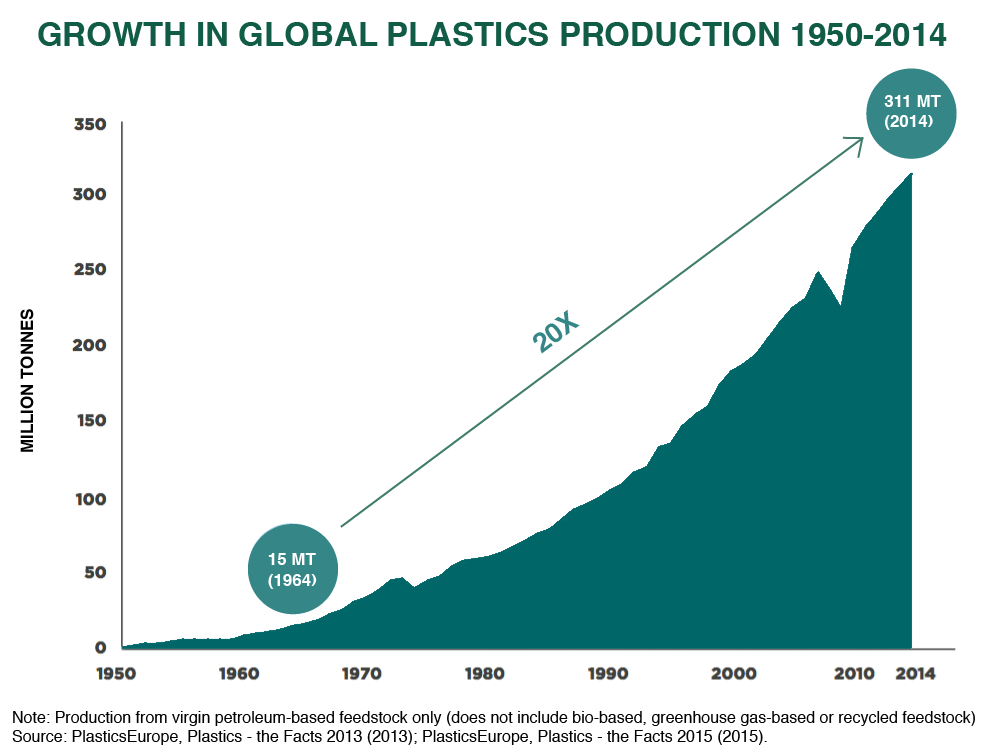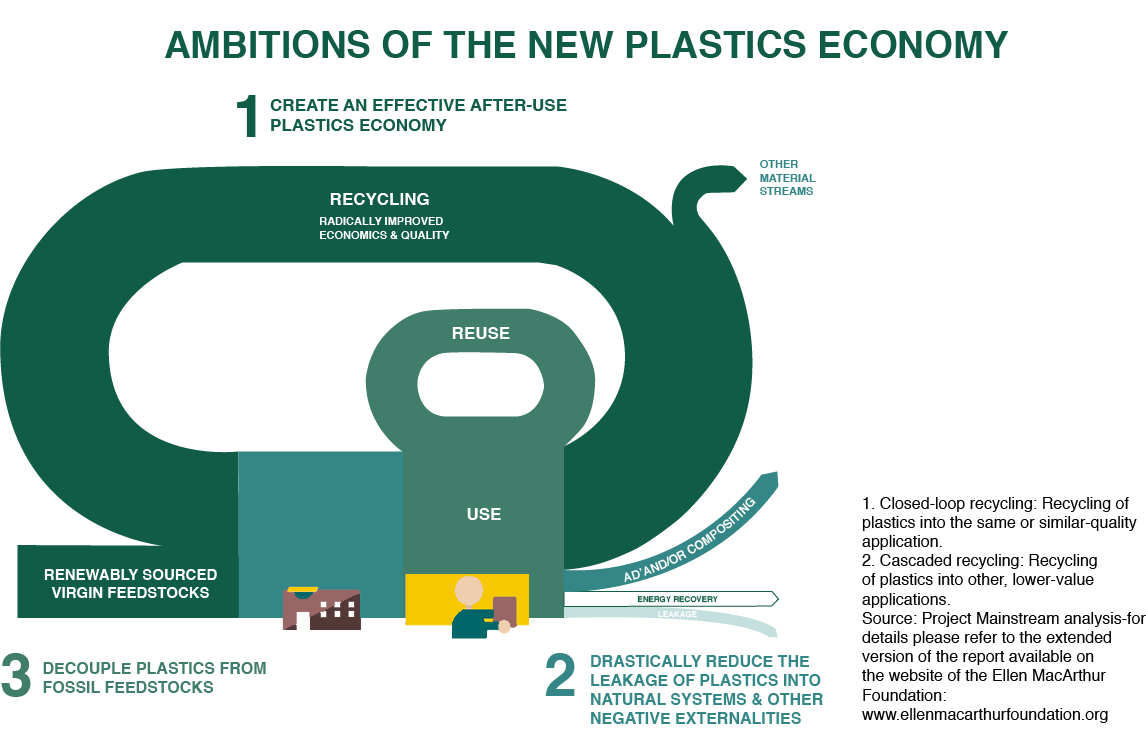There are only a few places in the world left untouched by human presence. One of these rare environments, an uninhabited atoll and UNESCO World Heritage site in the South Pacific called Henderson Island, has been overrun with an estimated 38 million pieces of trash. Every single day an additional 3,500 pieces wash up on this once beautiful shoreline. The major concern is that nearly all of the trash analyzed is made of plastic. What’s worse, these pieces come from many countries around the world.
The sheer amount of plastic waste is a global problem. Why? Nearly every single piece of plastic ever made still exists today and global plastic production has exceeded 300 million tons per annum, a figure widely expected to double in the next twenty years alone. Half of this plastic is for single use purposes such as water bottles and only 10% of all plastic produced is recycled. 72% of plastic packaging is not recovered at all, 40% is sent to landfills and 32% leaks out the collection system. The rest is either combusted, which creates deadly toxic fumes, or else dumped in our oceans, where they take over 1,000 years to biodegrade.

Source: The New Plastics Economy, World Economic Forum (2016)
.
Such waste of plastic is extremely damaging to the world’s ecosystems. Firstly, a substantial amount of energy (8% of global oil) is required to make plastic. The 17 million barrels of oil used to produce the PET for plastic water bottles emitted 2.5 million tons of carbon dioxide into the environment in 2016. That’s the same amount as 400,000 cars produce every year. As non-biodegradable polymers, plastic that is left in our oceans takes a massive toll on marine life by killing animals, poisoning the food chain and degrading the ecosystem. There are an estimated 5.25 trillion pieces of plastic debris in our oceans today, affecting at least 700 different marine species and killing 100 million marine mammals every year. Most of this trash accumulates in gyres around the Atlantic, Pacific and Indian Oceans. One example is the infamous Great Pacific Garbage Patch, which is 80% plastic, weighs 3.5 million tons and occupies an area twice the size of Texas.
Even though there are undeniable risks associated with plastics, this groundbreaking material has made an impressive contribution to every day life for several decades. Light, stable, airtight, watertight and inexpensive, plastic is found in our computers, cars and, of course, packaging. The latter is the main factor responsible for the vast amount of waste in society today.
.
Source: The New Plastics Economy, World Economic Forum (2016)
.
Packaging must therefore become smarter, more responsible and fully recyclable for future generations in order reduce waste and help protect the environment. This will be achieved through reusing materials more productively and creating a reliable supply chain from waste. Fortunately, there is already a great sustainable option on the market. The most sustainable plastic packaging when considering the life cycle of a product is post-consumer recycled (PCR) resin. Opting for PCR packaging is one the most effective solutions to reducing plastic waste as it made entirely from these materials. Sourced by waste streams and sorted by material type, consumers can learn exactly how the packaging is produced and where the materials are sourced. PCRs even carry a 70% lower carbon footprint than normal plastics. Creating more demand for this packaging is one of the fastest and most effective ways to responsibly solve the problem of plastic waste. The more PCR products exist on the market, the less plastic waste will be left in our oceans and landfills.
.
Source: The New Plastics Economy, World Economic Forum (2016)
.
This solution is fundamental in developing the New Plastics Economy. Inspired by the Ellen MacArthur Foundation, McKinsey and the World Economic Forum, the New Plastics Economy is a three year $10 million initiative to build momentum towards a new plastic system that is both safe and effective. Participants in the scheme include leading players such as M&S, Borealis, SUEZ, Tomra Systems, WRAP, Amcor, Coca-Cola, MARS, Unilever and Veolia. Seventh Generation, Method, Aveda and Vita are all shaping up to be leaders in this space.
The responsibility is ours to shape a world where all packaging is sourced responsibly, designed to be effective and safe throughout its life cycle and then recycled efficiently to provide a valuable resource for future use. If we start making changes now, and opting for PCR products, we can better protect the world we live in for future generations.

